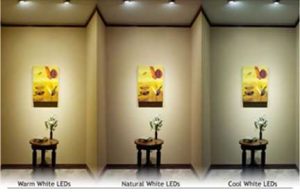Frequently Asked Questions
What information should you have before hiring an interior designer?
It is always useful when planning an interior design project to know at least the following 3 criteria:
- What is your overall budget for the project?
- What is your time frame for the project?
- What is your concept brief and what do you hope to achieve at the end of the project?
How involved will I as a client be on my project?
A successful design project starts by understanding your client’s needs. By asking the right questions you can provide a better design. Building rapport and respect are vital to creating a great creative collaboration. We like to involve our clients before we even start our design process. The client must feel involved in the design, and we even encourage brainstorming workshops to fine-tune the creative output.
How do you select the paint for an interior and what is the psychology of colour?
Believe it or not, when selecting paint for an interior space, this is not just based on the clients’ preferences or colour wish, but colour psychology also needs to be considered. Different colours allow stimulation and human behaviour through the hues of colour. Colour psychology studies show how the hues are a determinant of human behaviour. Colour influences perception, for example, red provokes excitement, appetite, danger, so we wouldn’t recommend you paint your bathroom or your bedroom red. Below is a small colour guide from a Paint Supplier offering useful tips.

How do you know what sort of fabric to select to put onto a couch?
When selecting a fabric for a couch it is important to remember 3 things:
- Martindale rub count – the number of times the fabric can be touched before it starts to weaken and show signs of wear and tear. Generally, when selecting a fabric for a couch we would suggest a rub count of 40 000 and up which will indicate your fabric will remain intact for a much longer period of time and give you greater satisfaction.
- If the fabric has a Fibre guard – this assures you, through a stain-free technology, that it will be able to stand up to everyday stains, i.e., spilt juice, spilt wine, muddy pet paws allowing the stain to be easily removed and looking as good as new.
- Texture – for a large item such as a couch I would suggest relatively plain, slightly mottled, or woven fabric with various scatter cushions adding your accent colours. However, it is important that your fabric has texture to it, as this will allow a warm feeling to the surface, stimulating sight and touch. Textures create more interest in a space than a flat fabric.
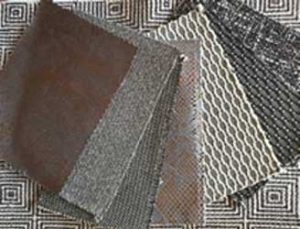
What’s the quickest and most cost-effective way to freshen up a tired, dull space?
Paint is probably your best friend when it comes to a quick interior makeover by refreshing a space with a new coat of paint and adding an accent wall colour. This is probably the most cost-effective technique, or if budget permits adding a wallpaper to an accent wall can completely transform a space. This coupled with re-covered or new scatter cushions will assist in the transformation.
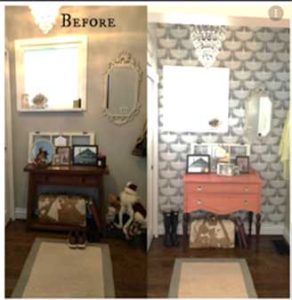
Time for cuts! Is this a common occurrence in interior design projects?
As interior designers, we often get faced with budget cuts, as unforeseen circumstances can affect your budget and cuts will need to be made. When faced with this dilemma and as tough as it is to change one’s design, it is important to keep a client happy with selections that are realistic to their budget. Finding an alternative supplier or fabric can dramatically reduce costs. With your perseverance in sourcing and procurement, the correct replacement options can be found. As per the image below both table lamps have dark bases and light shades with a slight variation in the shape of the base, however, the lamp on the left is a deal-breaker as it cost over R30 000.00 whereas the one on the right cost around R800.00.
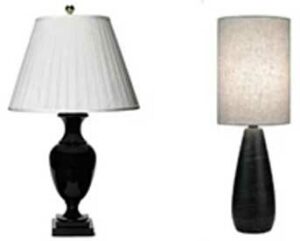
What’s your palette for Summer?
When selecting your palette for summer, allow for zesty, fun bright accent colours, which inspire uplifting moods and cheerful times. Generally, this is where your base colours, i.e., your neutral textured fabrics would remain the same and your scatter fabrics or accent chairs along with accessories will revitalize the space. Accent colours and accessories play a large role in transforming a space. i.e., brass planters – always try to keep your metal finishes to the same range for continuity, however different finishes of the same metal are acceptable i.e., brushed, polished, satin.
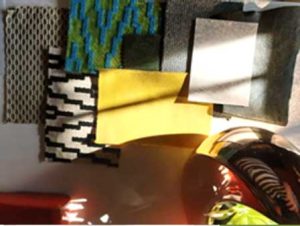
As an Interior Designer what is important to know when starting a project?
When starting a project, it is important that you as the designer know your expectations of the project area and what is your worth. A designer must consider their time, resources and talent required when completing a project and be assured that they are valued and appreciated when calculating their professional fees so as not to overcapitalize and underestimate the time and resources required to complete the project and meet the clients’ expectations.

What makes an interior space a home?
When creating an Interior design Space, it is important to note that a designed space is not completed until the warmth and familiar feeling of home is added to the space. This can be achieved in various ways such as artwork or wall décor, scatters and throws on chairs, books on tables, vases on shelves, plants, flowers in vases, Objet and other small touches to allow the client to feel the comfort of home, in design terms, we call this layering, and we feel the more layers the better. As you can see below, here we have added scatter cushions, throws, books to the coffee table, books to the bookcases as well as vases to allow for a more homely feel in the space.
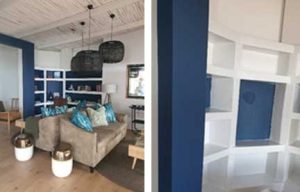
What is the importance of lighting?
Please never underestimate the importance of lighting in an interior design project. Lighting can, besides providing sufficient light for specific tasks, set the mood and atmosphere of a space. The tasks required at hand always need to be considered whether it is through direct or indirect lighting through a standing lamp, table lamp, downlight or decorative pendant or a combination of all four. Lighting creates a mood and sets a tone. The colour and warmth of your lighting also play a role i.e., in a bedroom you could put a warm white light whereas in a bathroom you would put a natural white light. Below is a comparison between warm, natural, and cool white lighting. It is always helpful to see your space after sunset and to set your lighting to create the mood you are wanting to achieve.
